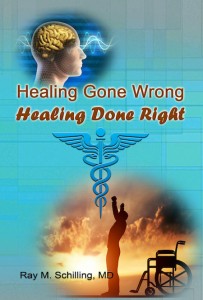Recently an online medical journal article from JAMA has revealed that sugar can cause heart attacks. As the Guardian reports, this analysis of influence peddling of the sugar industry going back 60 years has had far-reaching effects by confusing the public and policy makers in the US and around the world. At the same time the interference of the sugar industry was protecting its own interests. It increased sugar sales, but made people sick with obesity, diabetes and cardiovascular disease. This story is similar to the tobacco industry that was able for years to cover up that cigarette smoke is causing heart attacks and lung cancer.
Denying that sugar can cause heart attacks
The English physiologist John Yudkin noted in the 1960’s that sugar was elevating cholesterol and triglycerides. The sugar industry panicked. They wanted to do something to stop this new type of research. As we can read online the Sugar Research Foundation (SRF) had 319 correspondences (1551 pages) with Roger Adams. He was a professor serving on the SRF’s scientific advisory board (SAB) from 1959 to 1971. Another piece of evidence of influence peddling came from a review of correspondence between the SRF and D. Mark Hegsted. He was professor of nutrition at the Harvard School of Public Health. At the same time he was co director of the SRF’s first coronary heart disease research project. This took place from 1965 to 1966.
Historic falsification of research findings by John Yudkin
There are 27 documents totalling 31 pages in the Harvard medical Library. It is clear from this correspondence that the SRF was looking for a way to undermine the new research findings of negative effects of sugar. The SRF was looking for a way to confirm that fat reduction would be beneficial for patients. This way physicians would put many people on a low fat diet. This in turn would ensure continuing and rising sales of sugar.
New evidence that sugar can cause heart attacks
New research came out by D. Mark Hegsted in the Annals of Internal Medicine in June 1965. It linked sugar consumption to cardiovascular disease. It noted that blood sugar levels were a better predictor of hardening of arteries than cholesterol levels or high blood pressure. Another paper stated that it was sugar rather than starches causing high triglycerides in the blood. He hypothesized that “perhaps fructose, a constituent of sucrose but not of starch, was the agent mainly responsible.” An editorial in the same publication noted that these new findings corroborated Dr. Yudkin’s previous research that sugar could cause heart attacks.
The sugar industry was very concerned about these studies. If publicized widely, it would have the capacity to lower sugar sales.
Sugar can cause heart attacks, but review paper ignores this
On July 1, 1965, the SRF’s Hickson visited D. Mark Hegsted to discuss his publication. He wanted him to be part of an extensive literature review that would show that it was too much saturated fat that was the cause of high cholesterol and triglycerides, not sugar. It also should state that a lowering of fat content from 40% to 20% was necessary and that polyunsaturated fatty acids should be used to replace much of the fat. The fact that the food industry would quietly increase sugar content in processed foods was not mentioned. The review paper was called “Project 226”. It resulted in a 2-part literature review by McGandy, Hegsted, and Stare. It was entitled “Dietary Fats, Carbohydrates and Atherosclerotic Disease,” and was published in the New England Journal of Medicine (NEJM) in 1967. Industry and non-industry funding of the review authors’ experimental research was disclosed.
Falsified study from 1967 in the New England Journal of Medicine
However, the funding by the Sugar Research Foundation was omitted. The authors of the study received handsome amounts of money from the SRF for their efforts. The story that was told is all too well known, but false. There was the claim that the medical literature would have shown that a reduction of saturated fat intake lowered cholesterol. Triglyceride levels did not matter. Only cholesterol levels counted with respect to coronary artery hardening. There was also the statement that replacement of saturated fat with polyunsaturated fatty acids like corn oil would be beneficial in reducing heart attack rates.
Effect of the literature review on heart attack rates
Sadly the NEJM literature review has resulted in a government policy that lasted for decades. The gospel was that a low fat diet would prevent heart attacks. The food industry prepared foods that were low in fats and high in sugar and supposedly healthy. But the extra sugar made people fat, it did not decrease heart attack rates, but made them more frequent. Strokes were also on the rise and diabetes has become rampant. The reliance on corn oil has introduced another problem: omega-6 fatty acids are now consumed at an alarming rate. Corn oil has a 1:59 ratio for omega-3 to omega-6 fatty acids.
Corn oil causes inflammation
This means that corn oil contributes to the lack of omega-3 fatty acids in our food. When the ratio of omega-3 to omega-6 fatty acids falls below 1:3 or 1:4 the metabolism changes towards inflammation as the arachidonic acid system switches toward inflammation. Cardiologists have pinpointed inflammation as an important cause of hardening of arteries. Fish oil, a rich source of omega-3 fatty acids helps to prevent hard attacks and strokes.
The end result of the confusion regarding fat, sugar and heart attacks caused by the biased literature review meant misery, suffering and death for many for decades. But recently there has been a renaissance of Dr. John Yadkin’s research: Now it is clear what sugar is doing and how it affects our health.
How sugar can cause heart attacks and more
It is clear that sugary soda has detrimental effects on us: as little as one or two cans of sugary soda drinks per day lead to
- 26% greater risk of developing type 2 diabetes
- A 35% greater risk of heart attack or fatal heart disease
- A 16% increased risk of stroke
Dr. Frank Hu’s study
Dr. Frank Hu has participated in a study that spanned over 24 to 30 years and examined the replacement of saturated fat with polyunsaturated fatty acids (PUFA), monounsaturated fatty acids and whole grain carbohydrates. The study involved 84,628 women (Nurses’ Health Study, 1980 to 2010), and 42,908 men (Health Professionals Follow-up Study, 1986 to 2010). The researchers did detailed diet assessments every 4 years. 7,667 cases of cardiovascular disease (CHD) occurred during the study. Compared to controls that did not change their diet with respect to saturated fatty acid intake, those who replaced with PUFA had 25% less CHD, those who replaced with monounsaturated fatty acids had 15% less CHD and those who replaced saturated fatty acid intake with whole grains had 9% less CHD. In contrast, a subgroup that had replaced saturated fatty acid intake with carbohydrates from refined starches/added sugars ended up with a 10% increase of CHD.
Effect of sugar
We know now that sugar can increase cholesterol and triglycerides as Dr. John Yudkin has said in the 1960’s.
We also know that sugar can cause arthritis when combined with low omega-3 fatty acids and high omega-6 fatty acids. In the 1950’s Dan Dale Alexander wrote a book called “Arthritis and common sense”. The medical establishment did not accept that simple remedy and Dan Dale Alexander was classified as a “quack”. However, Dr. Mirkin describes a study from Berlin that later confirmed that Dan Dale Alexander’s observation was correct: an emulsion made by shaking orange juice with cod liver oil and taken three times per day on an empty stomach would indeed improve osteoarthritis.
High glycemic foods and starchy foods cause cancer
High glycemic foods (sugar, starchy foods) caused breast cancer, colorectal cancer and endometrial cancer. The majority of trials showed this association although not all. The more obese patients were, the more pronounced the insulin resistance was and the more the relationship to these cancers became apparent. A diet that is high in starchy foods like potatoes, rice and bread is causing pancreatic cancer as was shown by researchers at the Dana-Faber Cancer Institute, Brigham and Women’s Hospital and Harvard School of Public Health.
Conclusion
The low fat/ high glycemic diet was a fad-diet based on fictitious science, sponsored by the sugar industry. It became a human experiment and resulted in 60 years of suffering. During that time it became apparent that this diet did not work. It caused the obesity wave, a wave of heart attacks, strokes and cancer. This was all caused by too much sugar in the diet. Associated with this are the consumption of processed foods. There is too much sugar and an abundance of omega-6 fatty acids in processed food. This causes inflammation and hardening of the arteries.
What sugar does
We finally know that sugar raises cholesterol (LDL cholesterol in particular) and triglycerides. This leads to fat deposits and hardening of the arteries resulting in strokes and heart attacks. Remove refined sugar, limit your starchy food intake and eat fish as a source of omega-3 fatty acids. Feast on vegetables, salads and have some nuts as another source of omega-3 fatty acids. You are well on your way to preventing heart attacks, strokes and many cancers. After reading all the facts, there is no need to be a victim of the sugar industry. This also helps you to stay away from sugar’s associated health risks.









